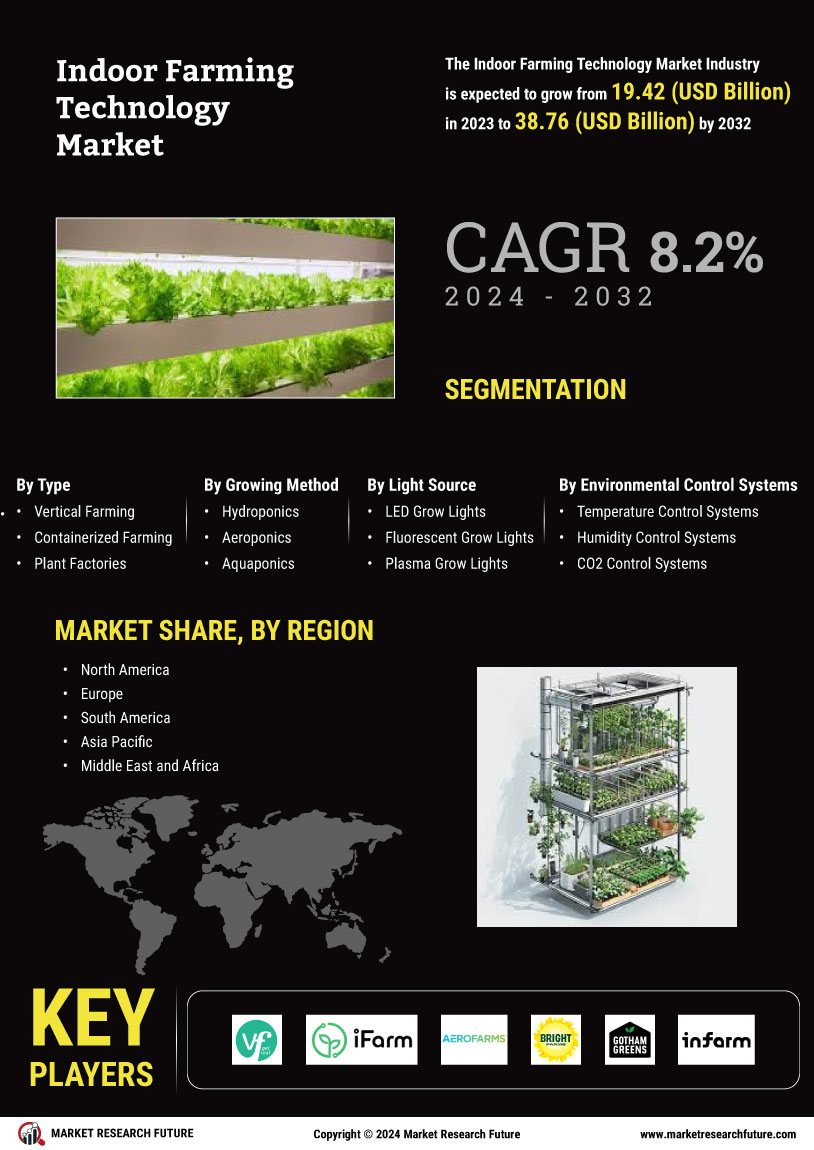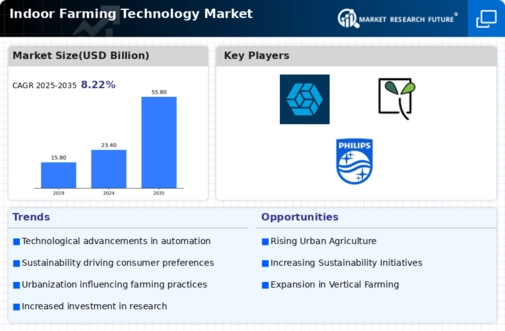Rising Urbanization
The Global Indoor Farming Technology Market Industry is experiencing growth driven by increasing urbanization. As more people migrate to urban areas, the demand for fresh produce rises, necessitating innovative farming solutions. Indoor farming offers a viable alternative to traditional agriculture, allowing for food production in limited spaces. In 2024, the market is projected to reach 23.4 USD Billion, reflecting the need for efficient food supply systems in densely populated cities. Urban indoor farms can utilize vertical space and advanced technologies to maximize yield, thereby addressing food security challenges in urban environments.
Sustainability Concerns
Growing awareness of environmental issues is influencing the Global Indoor Farming Technology Market Industry. Consumers are increasingly seeking sustainable food sources, prompting a shift towards practices that minimize ecological impact. Indoor farming utilizes less water and land compared to traditional agriculture, aligning with global sustainability goals. The ability to produce food locally reduces transportation emissions, further enhancing its appeal. As sustainability becomes a priority for consumers and governments alike, the market is poised for substantial growth, with a projected CAGR of 8.22% from 2025 to 2035, reflecting the increasing demand for eco-friendly farming solutions.
Market Growth Projections
Technological Advancements
Technological innovations are a key driver in the Global Indoor Farming Technology Market Industry. The integration of automation, artificial intelligence, and IoT devices enhances operational efficiency and crop management. For instance, smart sensors can monitor environmental conditions, optimizing growth parameters in real-time. These advancements not only improve yield but also reduce resource consumption, making indoor farming more sustainable. As the industry evolves, the market is expected to grow significantly, with projections indicating a rise to 55.8 USD Billion by 2035. This growth underscores the potential of technology to revolutionize food production.
Health and Safety Standards
The Global Indoor Farming Technology Market Industry is also influenced by heightened health and safety standards. Consumers are increasingly concerned about food safety, leading to a demand for locally grown, pesticide-free produce. Indoor farming systems can provide controlled environments that minimize the risk of contamination and ensure high-quality produce. This focus on health and safety aligns with consumer preferences for organic and sustainably sourced foods. As awareness of food safety issues continues to rise, the market is expected to expand, driven by the growing demand for safe and healthy food options.
Government Support and Policies
Government initiatives and policies are playing a crucial role in shaping the Global Indoor Farming Technology Market Industry. Many countries are recognizing the importance of food security and sustainability, leading to increased funding and support for indoor farming projects. Incentives such as grants, tax breaks, and research funding encourage innovation and adoption of indoor farming technologies. This support not only fosters growth within the industry but also helps to establish regulatory frameworks that promote best practices. As governments continue to prioritize food production and sustainability, the market is likely to see accelerated growth in the coming years.





Leave a Comment